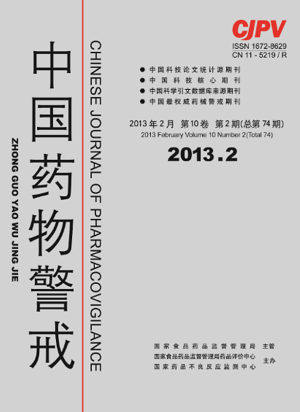|
|
Clinical Adverse Reactions of Quinolone Antibacterial Drugs
TAN Li-li
2013, 10(2):
92-95.
Objective By reviewing clinical adverse reactions of quinolone antibacterial drugs, to provide warning for the clinical rational use of antimicrobial drugs, and to prevent the adverse reactions happening of this kind of drug. Methods The related references about clinical adverse reactions of quinolone antibacterial drugs at home and abroad in recent years were collected, summarized and analyzed. Results The main clinical adverse reactions of quinolone drugs were the digestive system reaction, allergic reaction, photosensitized reaction, central nervous system reaction, cardiovascular system reaction, liver and kidney function damage, the blood system reaction, cartilage toxicity, tendon injuries and the influence on blood glucose, etc. Conclusion The symptomsf adverse reactions caused by the quinolone antibacterial drugs were numerous, involving many systems with some serious serious consequences in some cases, so clinical doctors should strictly master indications, reasonably choose medicine, attache great importance to adverse reactions monitoring, immediately take effective measures once the adverse reactions occur, so as to improve the safety of drugs.
References |
Related Articles |
Metrics
|
